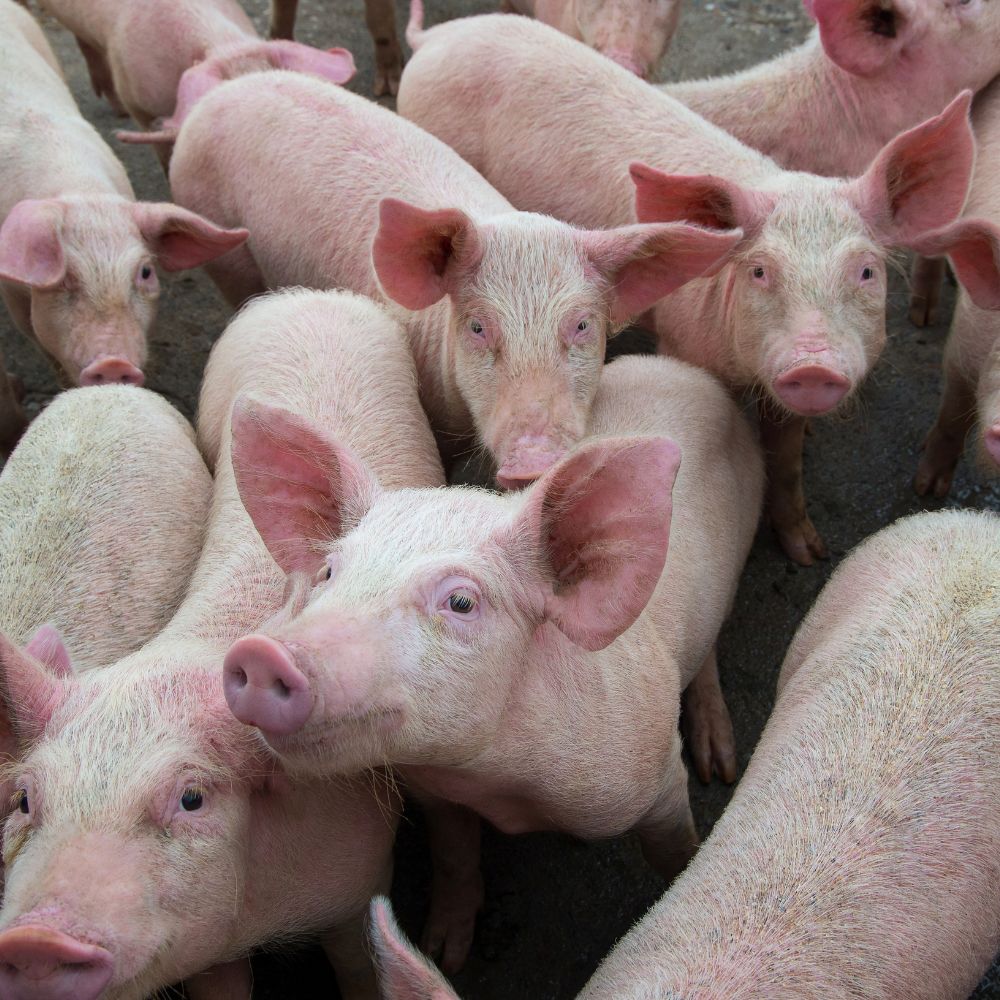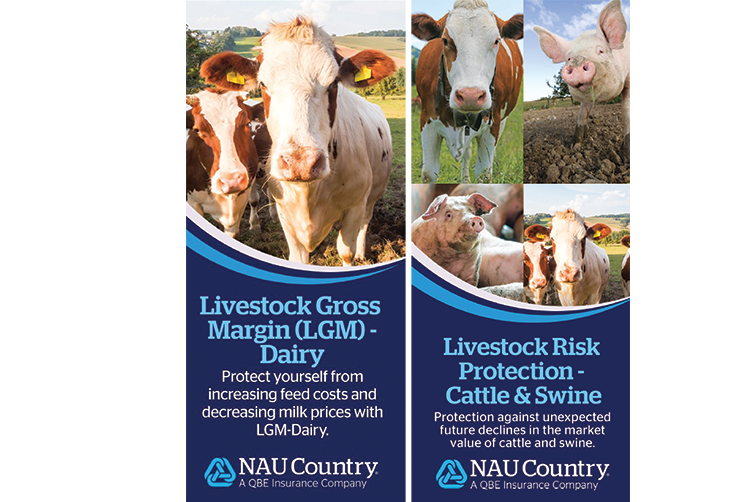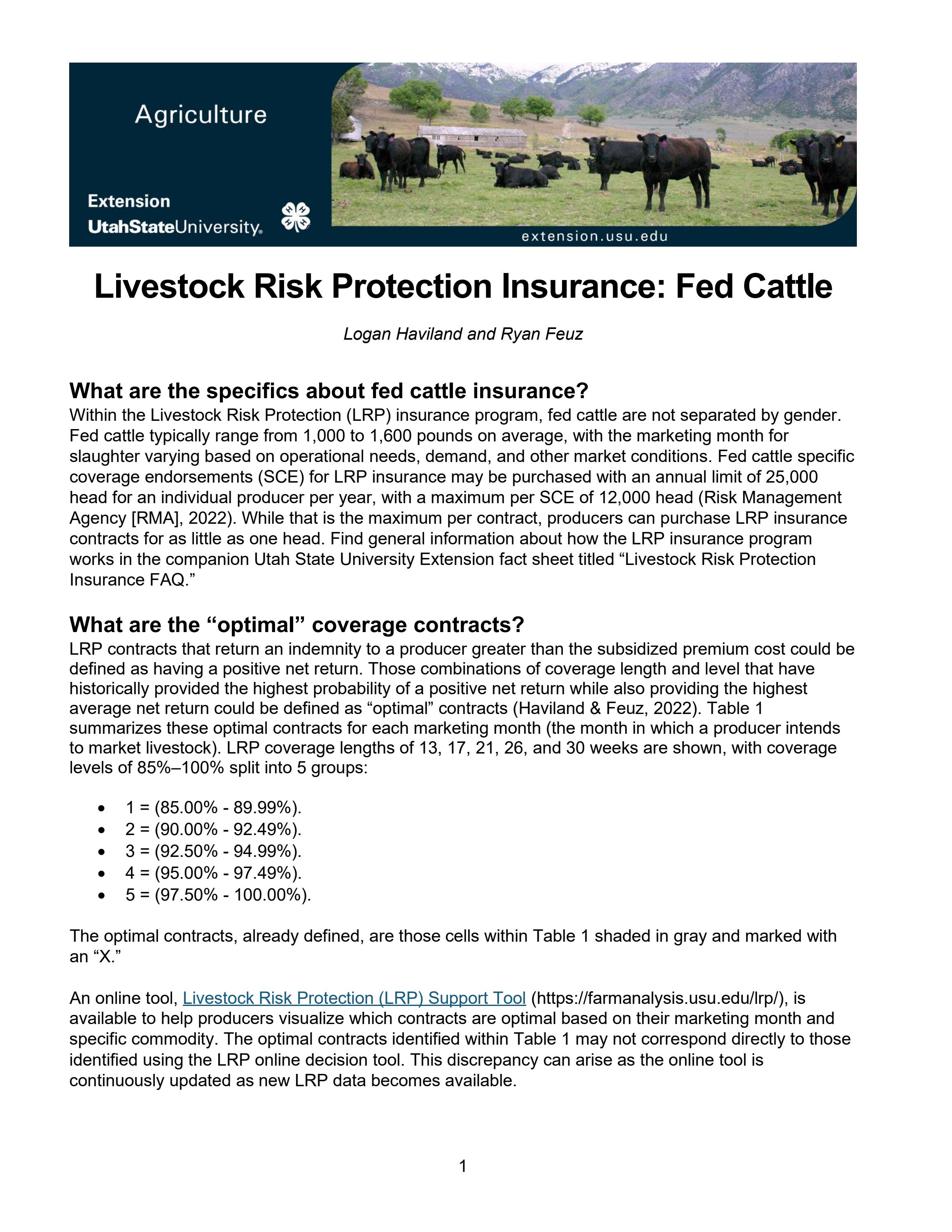Encourage Your Company: Bagley Risk Management Insights
Encourage Your Company: Bagley Risk Management Insights
Blog Article
Trick Variables to Take Into Consideration When Finding Animals Threat Defense (LRP) Insurance Policy
When assessing choices for Livestock Danger Defense (LRP) insurance, several essential factors require mindful factor to consider to guarantee effective risk administration in the agricultural industry. Choosing the best protection choices customized to your certain animals operation is paramount, as is comprehending just how superior costs correlate with the degree of defense used. Additionally, the qualification requirements for various sorts of animals and the adaptability of the plan to adapt to transforming circumstances are critical elements to evaluate. Additionally, the performance and openness of the insurance claims procedure can considerably impact the total experience and financial end results for livestock manufacturers. By purposefully navigating these essential variables, manufacturers can secure their financial investments and alleviate possible risks successfully.
Coverage Options
When considering Livestock Threat Protection (LRP) insurance, it is vital to comprehend the various protection choices offered to alleviate dangers in the agricultural sector. Animals Danger Security (LRP) insurance supplies various insurance coverage alternatives customized to meet the diverse demands of animals producers. Bagley Risk Management. Among the key insurance coverage alternatives is price protection, which safeguards versus a decrease in market value. Producers can select the protection degree that lines up with their price risk monitoring objectives, allowing them to protect their operations versus potential financial losses.
Another important protection alternative is the recommendation duration, which establishes the length of time the protection holds. Producers can choose the endorsement period that finest matches their production cycle and market conditions. Furthermore, insurance coverage degrees and prices vary based upon the kind of livestock being insured, giving producers the adaptability to tailor their insurance policy intends according to their particular needs.
Recognizing the various protection alternatives readily available under Livestock Threat Defense (LRP) insurance policy is crucial for manufacturers to make informed decisions that efficiently shield their animals operations from market unpredictabilities.
Costs Prices

Animals Risk Defense (LRP) insurance coverage gives essential coverage alternatives tailored to alleviate threats in the agricultural industry, with a considerable element to take into consideration being the calculation and framework of premium expenses. When determining premium expenses for LRP insurance coverage, numerous elements enter play. These include the kind and number of animals being guaranteed, the insurance coverage level picked, the existing market value, historic cost data, and the size of the insurance coverage period. Insurance firms might additionally think about the area of the ranch, as geographic elements can affect the general danger profile.
Premium prices for LRP insurance policy are normally computed based on actuarial information and run the risk of analysis versions. Insurance providers evaluate historical information on animals costs and manufacturing expenses to identify a suitable premium that shows the degree of risk entailed. It is important for livestock manufacturers to very carefully review premium expenses and coverage choices to ensure they are sufficiently safeguarded versus potential monetary losses due to negative market conditions or unexpected events. By understanding just how premium prices are computed and structured, manufacturers can make educated decisions when choosing the best LRP insurance plan for their operation.
Qualified Livestock
The determination of qualified animals for Livestock Threat Defense (LRP) insurance coverage includes cautious factor to consider of specific criteria and qualities. Animals kinds that are generally eligible for LRP insurance include feeder livestock, fed swine, lambs, and livestock.
Feeder livestock, as an example, are typically eligible for LRP coverage if they drop within defined weight arrays. Fed livestock might also be qualified, yet they need to satisfy certain weight and quality grade demands. Swine eligible for insurance coverage normally include market weight pets meant for massacre. Lambs are another category of livestock that can be thought about for LRP insurance coverage, with variables such as weight and age playing a critical role in determining their qualification.
Prior to selecting LRP insurance coverage for animals, manufacturers must thoroughly evaluate the qualification requirements laid out find by the insurance coverage company to guarantee their pets satisfy the essential needs for insurance coverage.
Plan Versatility
Policy adaptability in Livestock Danger Defense (LRP) insurance coverage enables producers to customize insurance coverage to match their certain demands and risk monitoring techniques. This versatility empowers livestock producers to customize their insurance coverage policies based upon elements such as the sort of livestock they own, market problems, and individual threat resistance degrees. One key facet of policy adaptability in LRP insurance coverage is the capability to select insurance coverage degrees that line up with the manufacturer's financial objectives and take the chance of exposure. Producers can pick coverage levels that secure them versus prospective losses as a result of changes in animals rates, ensuring they are appropriately guaranteed without paying too much for unneeded coverage. In addition, LRP insurance policy offers versatility in plan period, allowing producers to choose coverage periods that finest fit their manufacturing cycles and advertising and marketing timelines. By supplying customizable choices, LRP insurance policy allows producers to successfully handle their threat direct exposure while safeguarding their livestock operations against unanticipated market volatility.
Claims Refine
Upon experiencing a loss or damages, producers can launch the cases procedure for their Animals Threat Defense (LRP) insurance by promptly contacting their insurance provider. It is crucial for manufacturers to report the loss as soon as possible to speed up the cases process. When getting to out to the insurance provider, manufacturers will need to give detailed details regarding the incident, including the day, nature of the loss, and any pertinent paperwork such as veterinary documents or market value.

After the analysis is full, the insurance coverage supplier will make a decision relating to the insurance claim and connect the result to the producer. If the insurance claim is authorized, the producer will certainly get compensation according to the terms of their Animals Danger Protection (LRP) insurance coverage. Bagley Risk Management. It is necessary for producers to be aware of the claims process to make sure a smooth experience in case of a loss

Conclusion
In conclusion, when selecting Livestock Threat Defense (LRP) he has a good point insurance coverage, it is important to consider coverage alternatives, premium expenses, qualified livestock, policy versatility, and the insurance claims procedure. These key aspects will aid make certain that farmers and breeders are effectively protected against potential risks and losses related to their livestock operations. Making an informed choice based on these factors to consider can ultimately result in far better monetary protection and satisfaction for livestock manufacturers.
Livestock Danger Security (LRP) insurance coverage uses different protection options customized to satisfy the diverse demands of animals producers.The resolution of eligible livestock for Animals Threat Protection (LRP) insurance policy coverage involves mindful factor to consider of particular criteria and features.Policy versatility in Livestock Risk Defense (LRP) insurance policy allows producers to customize protection to match their particular requirements and run the risk of monitoring techniques.Upon experiencing a loss or damage, manufacturers can start the insurance claims process Read Full Article for their Livestock Threat Security (LRP) insurance by without delay contacting their insurance coverage supplier.In verdict, when selecting Animals Threat Defense (LRP) insurance coverage, it is necessary to think about insurance coverage choices, premium expenses, eligible livestock, plan flexibility, and the cases process.
Report this page